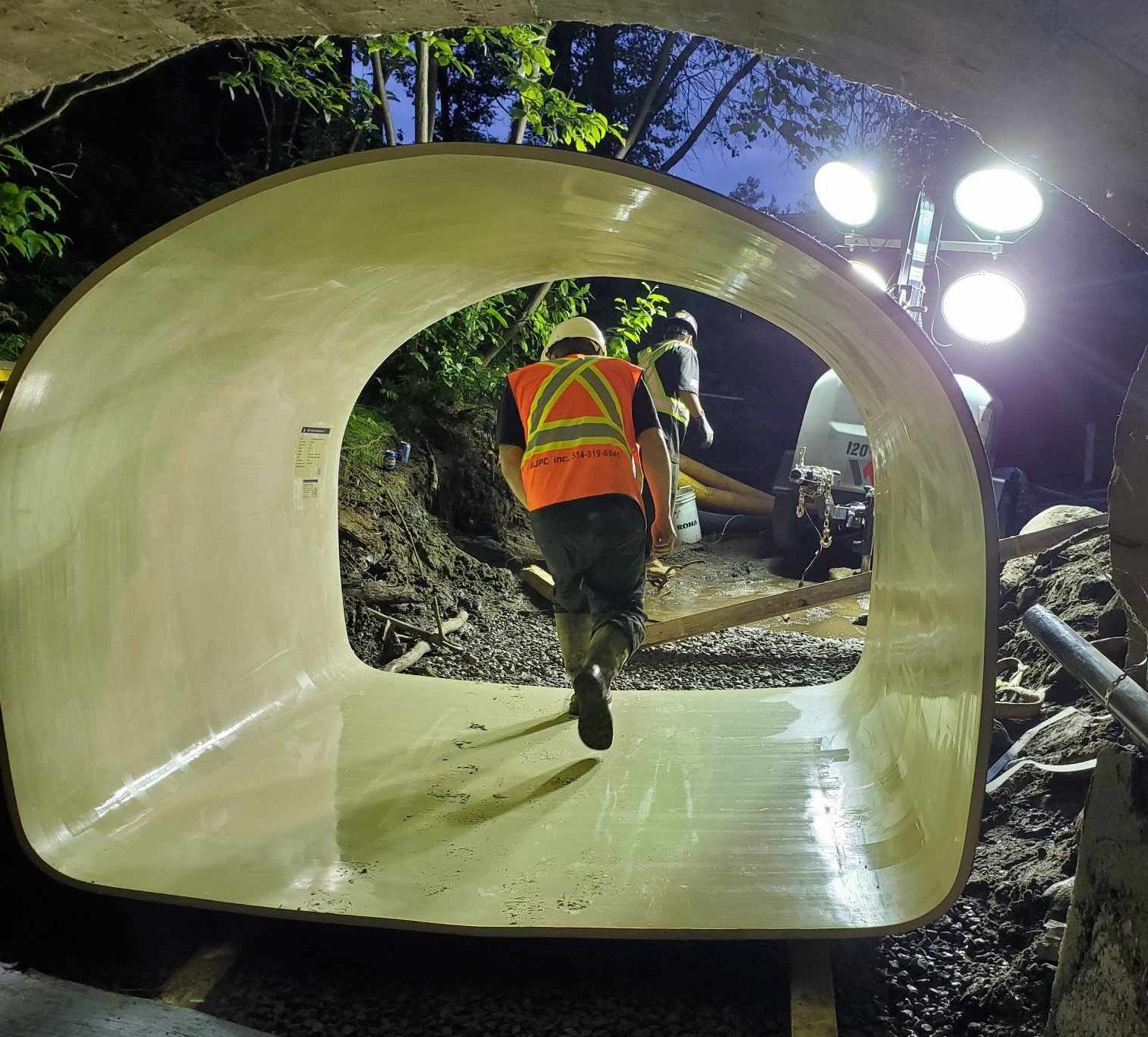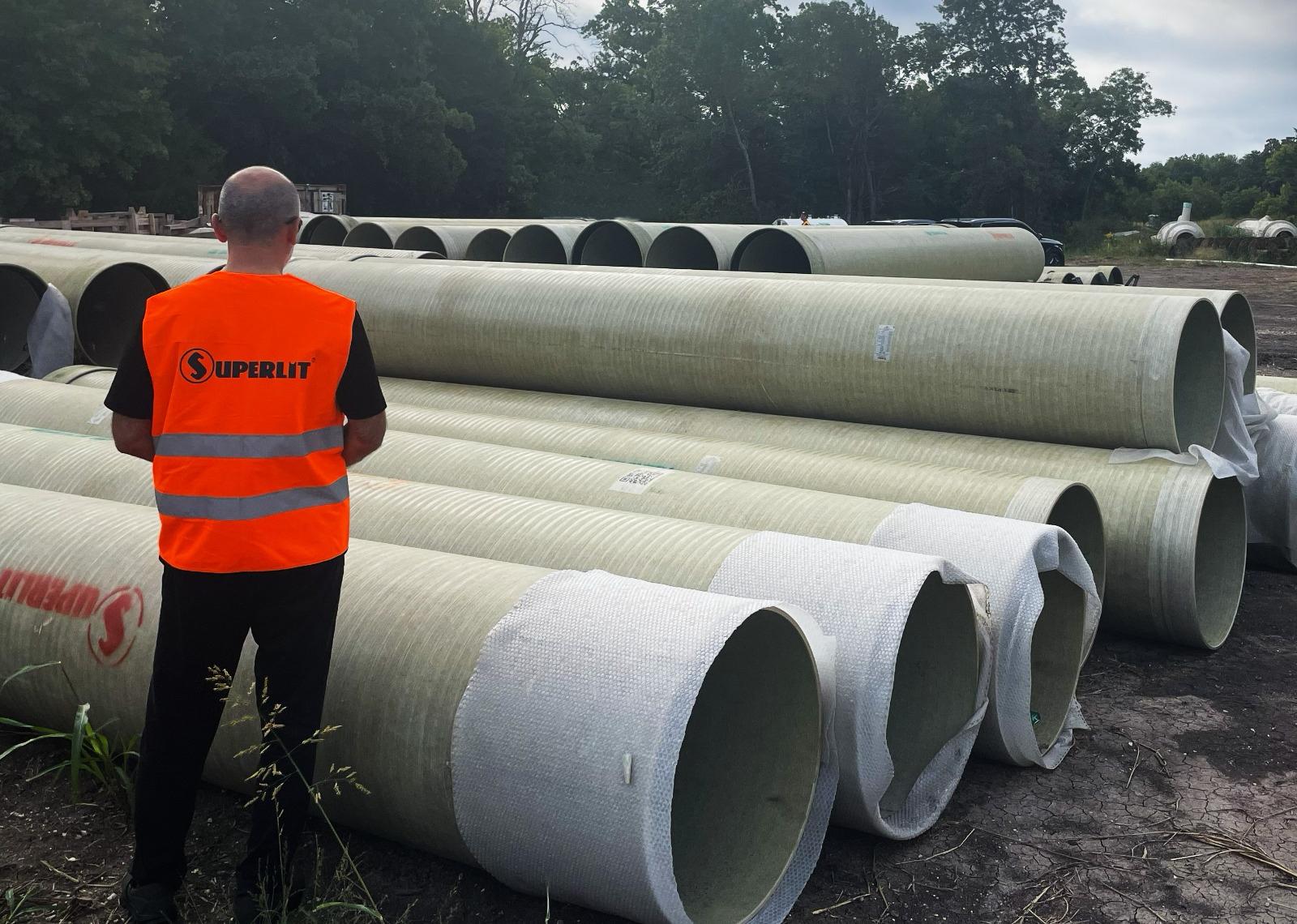
33.1 ft (10.1 m)
Total Length
82 in × 62 in (2,082 mm x 1,570 mm)
Diameter
Flow capacity improved by 8%
Key Feature
The City of Trois-Rivieres undertook the rehabilitation of culvert No. 47 following an inspection that revealed concerning signs regarding its structural capacity. The condition of the culvert justified the immediate closure of Chemin des Sables for public safety reasons.
The existing structure was an unreinforced concrete arch culvert, approximately 2.4 m (94.5 in) wide and 1.8 m (70.8 in) high. The rehabilitation involved the installation of Channeline structural FRP (Fiberglass Reinforced Plastic) arch-shaped liners measuring 2.082 meters by 1.570 meters (82 in × 62 in) with a wall thickness of 42 mm. Despite the reduction in the culvert’s internal diameter, the new structure increased its hydraulic capacity by nearly 8%.
The site presented several significant constraints. There was considerable material loss on the upstream and downstream slopes, unstable and steep embankments, and severe erosion of the road and slopes, as the culvert was located in a low point. In addition, the presence of a utility pole, overhead lines, trees, and guardrails made the work environment particularly challenging. Only one access point for machinery was available on the upstream side.
Designed in accordance with the ASCE MOP-145 method and fully compliant with ASTM D3262, Channeline FRP liners provided a custom-engineered structural solution perfectly suited for the site’s limited access and non-circular shape of the host structure. Prefabricated in modular sections with a smooth inner surface and high stiffness-to-weight ratio, the liners allowed for rapid installation with minimal excavation, while maintaining optimal flow performance. Their lightweight composition simplified handling on site and minimized environmental disturbance, particularly important given the constrained workspace and surrounding utilities.
The corrosion resistance and durability of the Channeline system ensure a service life of up to 100 years, significantly reducing the need for future interventions in this difficult-to-access location. By leveraging these advantages, the City of Trois-Rivieres successfully restored roadway safety and full structural integrity to the culvert, while delivering a sustainable, long-term rehabilitation solution.



